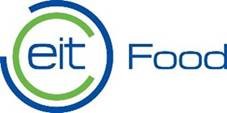Real-time grain measurement could help farmers sort crop quality more easily
17 December 2020

Farmers could benefit from new harvesting innovation that will sense grain quality in real time.
The new technology is being developed by a team of agricultural industry partners alongside academic expertise from the University of Reading. Using a technique often found in medical sensory devices, the smart sensors being tested will give farmers instant feedback on the quality of grains such as wheat, barley and oilseed rape.
The EIT Food-funded project,Constituent Sensing of Small Grains, would enable grain protein and oil contents to be measured as they are harvested from the field by the combine harvester. As well as providing important information about the marketing of the grains, the data would enable farmers to create maps of their fields to understand variation in grain quality.
John Hammond, Professor of Crop Science at the University of Reading leads the academic input into the project. Professor Hammond said:
“Our project is using Near Infrared Spectroscopy (NIRS) to measure the quality of the grain samples being harvested from the field. NIRS analysers work by emitting a spectrum of NIR wavelengths at the grain sample and then measures the wavelengths reflected or transmitted through the grain. Based on the wavelengths detected and calibration models, it is possible to quickly and robustly measure many aspects of the grain’s constituents, such as protein or oil content.
“This technology has been used for decades on farms and grain stores to check the quality of harvested products, but only on small sub-samples. We are working with John Deere, who is already known to offer a robust NIRS sensor for forage harvesters, manure tankers and as a stationary unit, to test and validate this technology.”
The smart sensors being developed in the project will continuously measure grain as it flows through the combine harvester providing data on the grain as it is harvested. The team are working on connecting this data with GPS location during harvest, allowing field scale maps to be developed showing how the grain quality varies across the field.
These data can be used to provide a more accurate (within field scale) measures of grain quality for marketing purposes and potentially allowing different grain qualities to be separated and sold into different markets in the future. The field scale map can be used to optimise production, allowing resources to be focused on unproductive areas of fields and/or reduce inputs to more productive areas.
Dr Thomas Engel, Manager of Technology Innovation Strategy for John Deere said:
“Measuring grain constituents like protein during harvesting on the combine is another important puzzle piece of precision farming technology, moving us towards a sustainable production of high quality grain whilst helping to reduce our impact on the environment.”
More information about the project can be found at:
https://www.eitfood.eu/projects/constituent-sensing-of-small-grains
 | |
 |
This activity has received funding from EIT Food, the innovation community on Food of the European Institute of Innovation and Technology (EIT), a body of the EU, under the Horizon 2020, the EU Framework Programme for Research and Innovation. |
EIT Food is Europe’s leading agri-food innovation initiative, with the aim to create a sustainable and future-proof food sector. The initiative is made up of a consortium of key industry players, start-ups, research centres and universities from across Europe. EIT Food aims to collaborate closely with consumers to develop new knowledge and technology-based products and services that will ultimately deliver a healthier and more sustainable lifestyle for all European citizens.
